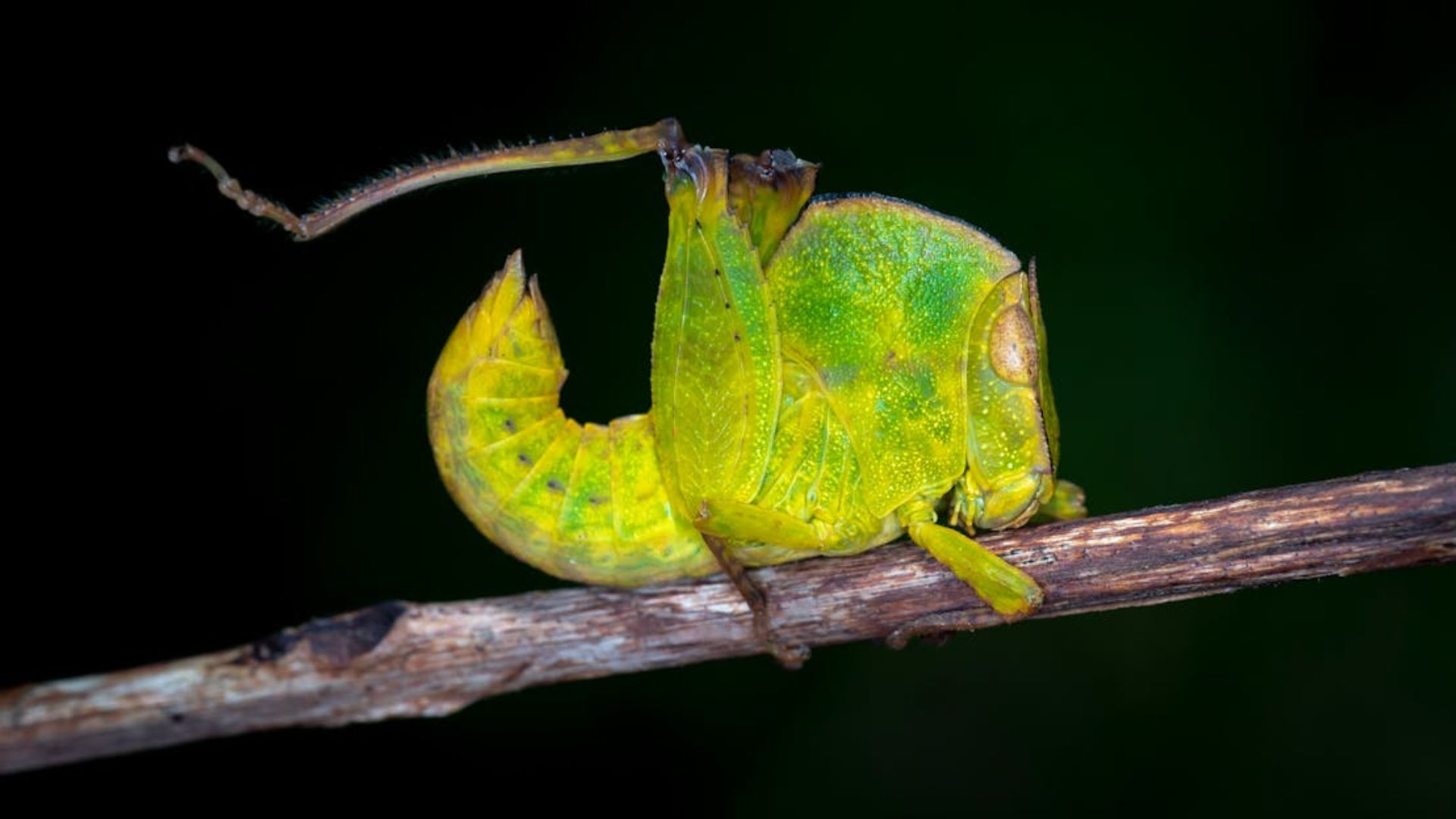Treehopper insects are some of nature’s most peculiar creations. With spiny helmets, ball-like bumps, and trident-shaped structures growing from their backs, they’ve fascinated scientists for decades.
Over 3,000 such species exist, and each comes with a strange body shape that doesn’t quite fit into the usual explanations like camouflage or mimicry. Now, a study led by researchers at the University of Bristol offers a surprising new idea.
The study suggests that the bizarre body shapes in treehoppers might have evolved to detect static electricity. If true, this would be the first time electric sensing is linked to body shape evolution in land animals.
“We think our study provides a really exciting launch pad for investigating static electricity as a driver of organismal morphology more generally,” Sam England, one of the study authors, and a PhD graduate from the University of Bristol, said.
Investigating electric signals in insects
Their starting point for the study was an intriguing question—if other insects like bees and caterpillars can detect weak electric fields, could treehoppers use their dramatic body shapes to boost the same ability? To test this idea, the team first investigated the electric charges of different insects that treehoppers interact with.
For instance, they measured the electrostatic charge of predatory wasps, natural enemies of treehoppers, and found that these wasps carry significant static charges, with both the magnitude and polarity (positive or negative) varying. However, stingless bees, which sometimes protect treehoppers from predators, carried different and less threatening charges.
Next, they tested whether treehoppers respond to electric fields at all. The researchers exposed live treehoppers to weak electric fields in a controlled setting and observed that the insects moved away from the fields, clear evidence that they can detect electrostatic forces. “A total of 151 individual treehoppers from 11 different evolutionary clades had their net electrostatic charge measured,” the study authors note.
Then came the most technical part of the study that involved computational modeling. The researchers created 3D digital models of treehoppers with different body shapes and simulated how electric fields behave around them.
They found that treehoppers with more exaggerated, elaborate shapes showed much higher electric field intensities near their body surfaces compared to those with simpler shapes. This showed that their body structures can amplify electrostatic signals, making them more sensitive to nearby electrical disturbances, like the approach of a predator.
“Our study provides the first evidence of the electrostatic sense potentially driving morphological evolution,” Dr. England said.
The new science of shape and charge
Electroreception is known in aquatic species like sharks and electric fish, but it’s rarely considered in land-dwelling insects. In fact, the idea that static electricity, which can be created just by contact or movement, might help shape an animal’s body challenges long-standing ideas about how evolution works.
However, an important point to note here is that while the study makes a strong case that treehoppers can sense electric fields, the researchers have yet to experimentally prove that static sensing caused the insect body shapes to evolve.
“If we can link treehopper shapes to certain aspects of their electrical ecology, like specific predators which approach from certain angles with particular static charges, this would really begin to strongly support our ideas around static electricity as an evolutionary driver,” Dr. England notes.
If confirmed, this could change how scientists think about bizarre body forms, not just in treehoppers, but in other oddly shaped insects. “There are plenty of other insects, spiders, and other animals and plants that also have really extreme shapes, which in many cases are currently without explanation,” Dr. England added.
The study is published in the journal Science.
